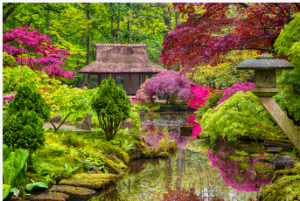Urban landscape design Adelaide encompasses the planning and implementation of public spaces like sidewalks, roads and gardens to improve city life while protecting ecosystems and wildlife habitats – to provide stylish yet pleasing surroundings for people who live there.
At this stage, designers consider space restrictions, building materials costs and labour expenses, element restrictions, utility placements, topography and property borders.
Natural resources
 Natural resources help keep people connected to nature and wildlife around them while at the same time maintaining quality ecosystems for urban liveability. Green plants help control home environments by cooling temperatures, reducing carbon dioxide levels and absorbing toxic materials – such as greenery.
Natural resources help keep people connected to nature and wildlife around them while at the same time maintaining quality ecosystems for urban liveability. Green plants help control home environments by cooling temperatures, reducing carbon dioxide levels and absorbing toxic materials – such as greenery.
Landscaping with various species of plants helps promote wildlife in urban landscapes. Wildflowers attract many insects that feed off or pollinate them – adding visual appeal throughout each season!
Green spaces near schools and government buildings help residents gain easy access to essential amenities. Placing these facilities near high-population residential areas makes it easier for residents to walk directly to their destinations without spending much time in transit, thus decreasing road time spent between neighbours and strengthening the sense of community.
Livability
Urban landscape design Adelaide that succeeds considers living conditions and how they’re affected by the surrounding environment, as well as natural ecosystems, existing infrastructure and overall site plans for optimal results.
Urban landscapes that include walking paths, green space, and an array of plantings foster healthy living. Studies demonstrate how spending time in nature can reduce stress levels, lower blood pressure, help manage asthma more effectively, and boost overall well-being. Spending time outside also has benefits such as helping prevent obesity, improving mental health and fostering social connections among neighbours – all critical components to urban biodiversity preservation.
Safety
Urban landscape designers must consider several safety measures when designing urban spaces, including ensuring safe traffic and pedestrian flow while clearing walkways of low-hanging shrub lines, tripping hazards or other obstructions. Furthermore, utilities (electrical boxes, fire hydrants, underground and overhead wires) and existing features can be safely accessed and maintained.
Landscaped spaces that are accessible and provide recreational opportunities foster a sense of community, helping reduce crime rates and other adverse social effects. Spending time in green, natural environments has also been proven to reduce stress levels and promote better overall health outcomes.
Urban landscape designs often start with a base plan to identify any problematic areas and develop project procedures, followed by a concept design to visualize plant placement, tree and structure placement, drainage issues, lighting requirements and preferred horticulture practices.
Sustainability
Urban landscapes incorporating native plants, trees and natural waterways can offer many environmental services that help combat climate change, such as air filtration, carbon storage and stormwater management. Such ecosystems also help reduce resource depletion, waste generation, and pollution while fighting climate change.
Green spaces in cities allow residents to spend time outside, with numerous health advantages such as lower stress levels, healthy blood pressure levels, reduced asthma symptoms and an overall clearer mind.
Urban landscape design follows similar principles, whether it involves designing a rooftop terrace in an old city car park to ensure its functionality and sustainability. It involves considering factors like the surrounding environment, assessing space constraints and conducting site surveys before creating designs that meet these criteria. Erosion control can often be controlled through strategically placed plants, retaining walls and erosion barriers.
Urban landscape design is more than just pretty plants and charming parks. It includes streets, sidewalks and alleyways that shape a city’s aesthetic and culture. It also plays a vital role in the health and well-being of city residents. A well-executed urban landscape design can enhance a city’s livability and sustainability and contribute to economic growth. It can also increase social cohesion and promote environmental sustainability.
An urban landscape design can take a variety of forms depending on a city’s culture, needs and availability of space. It can incorporate modern architecture, high-rise buildings and green spaces to create a cohesive, appealing design that blends nature and civilization. It can also use historic buildings and monuments, vibrant public art displays and a bustling downtown business district.